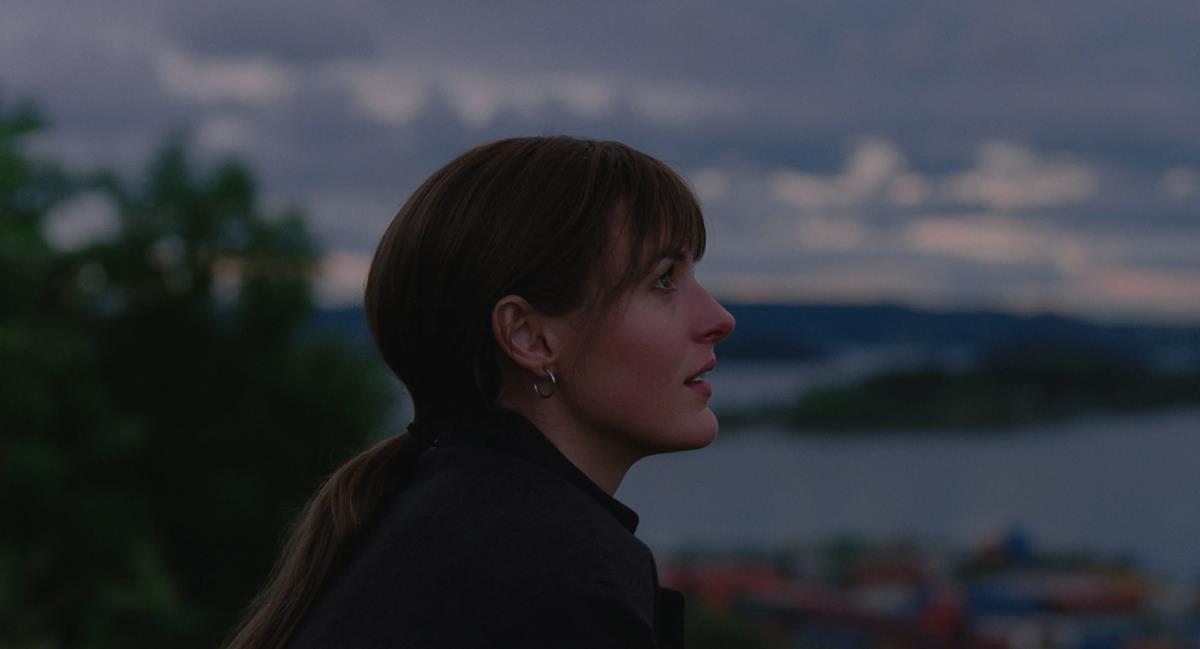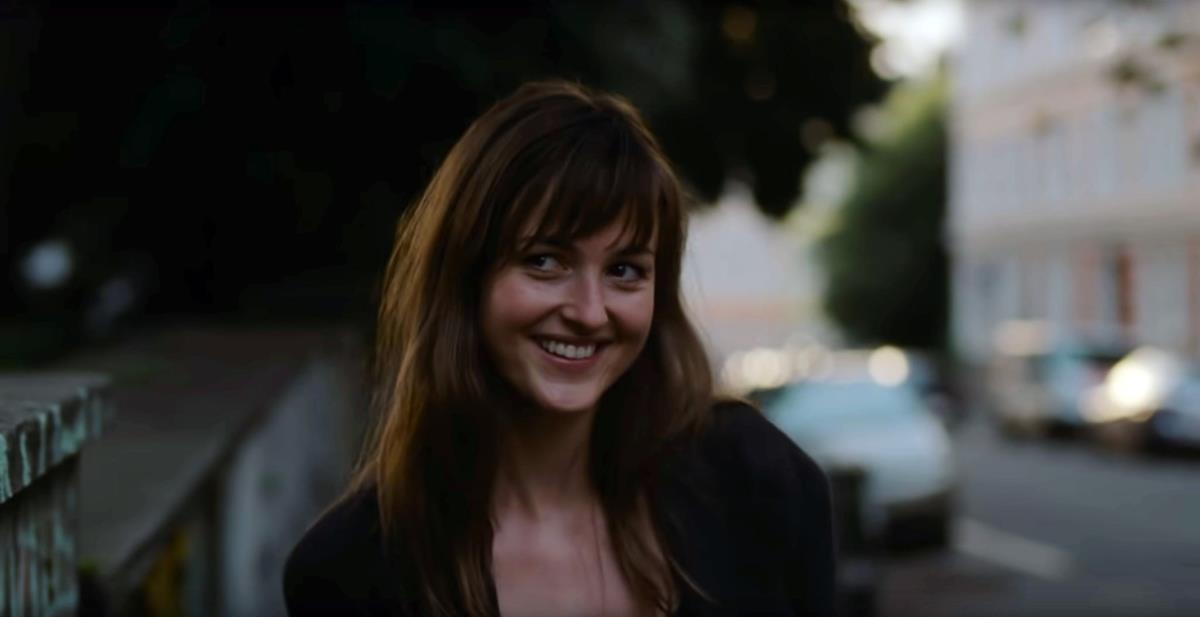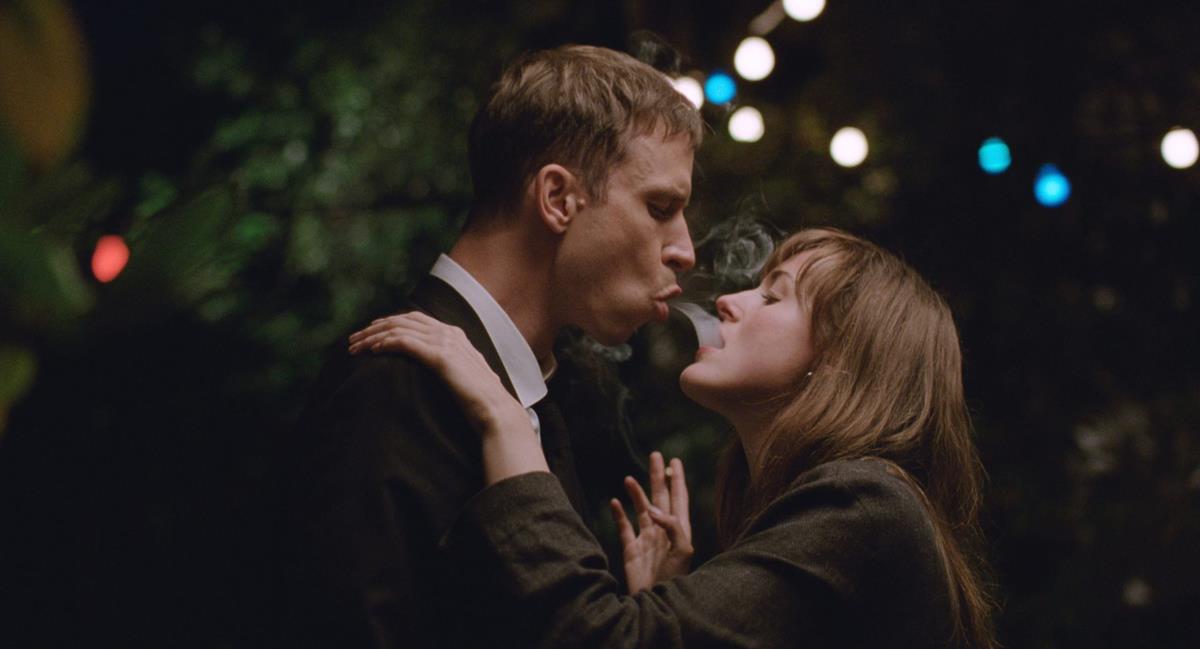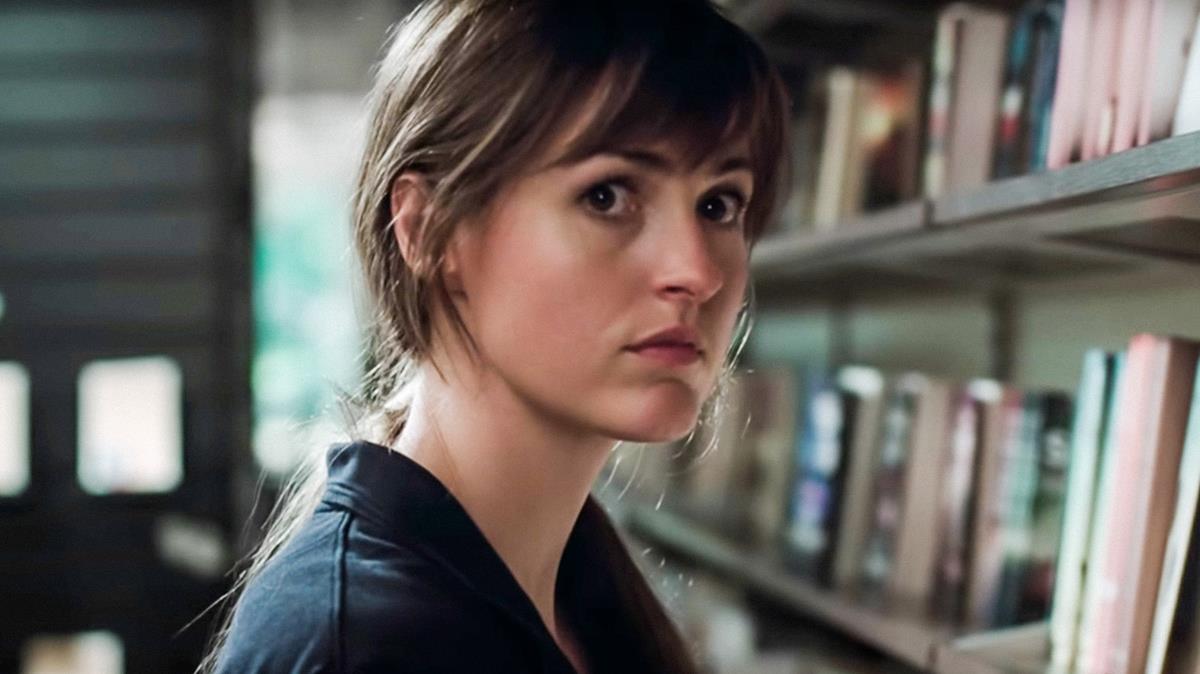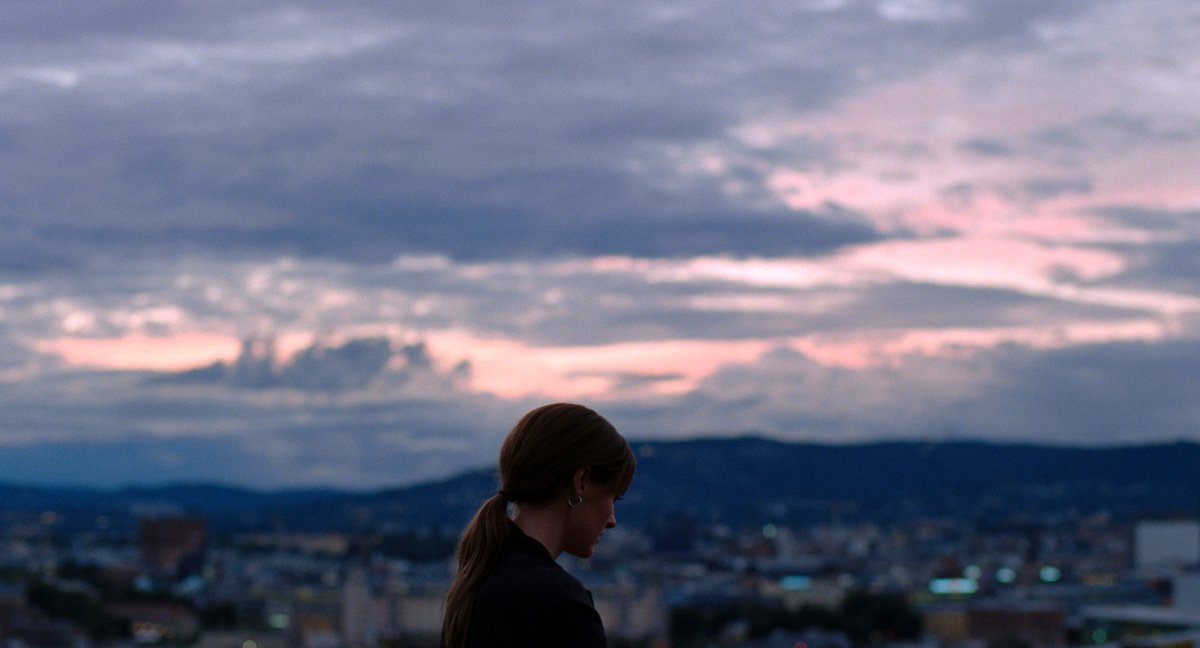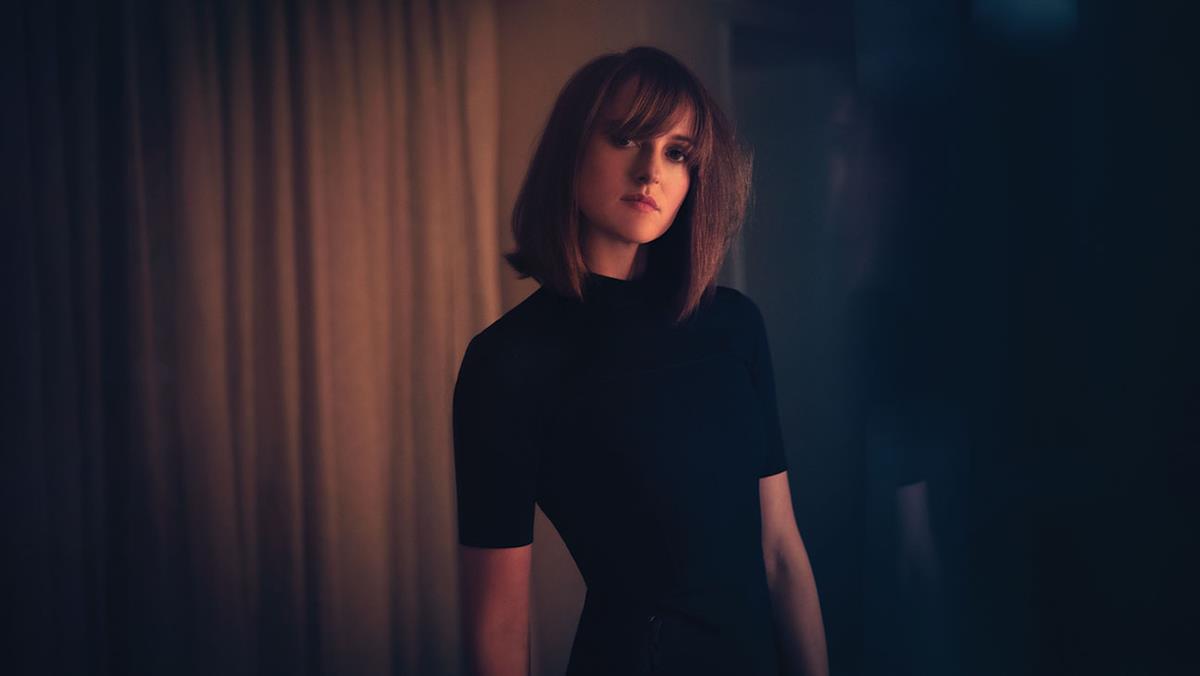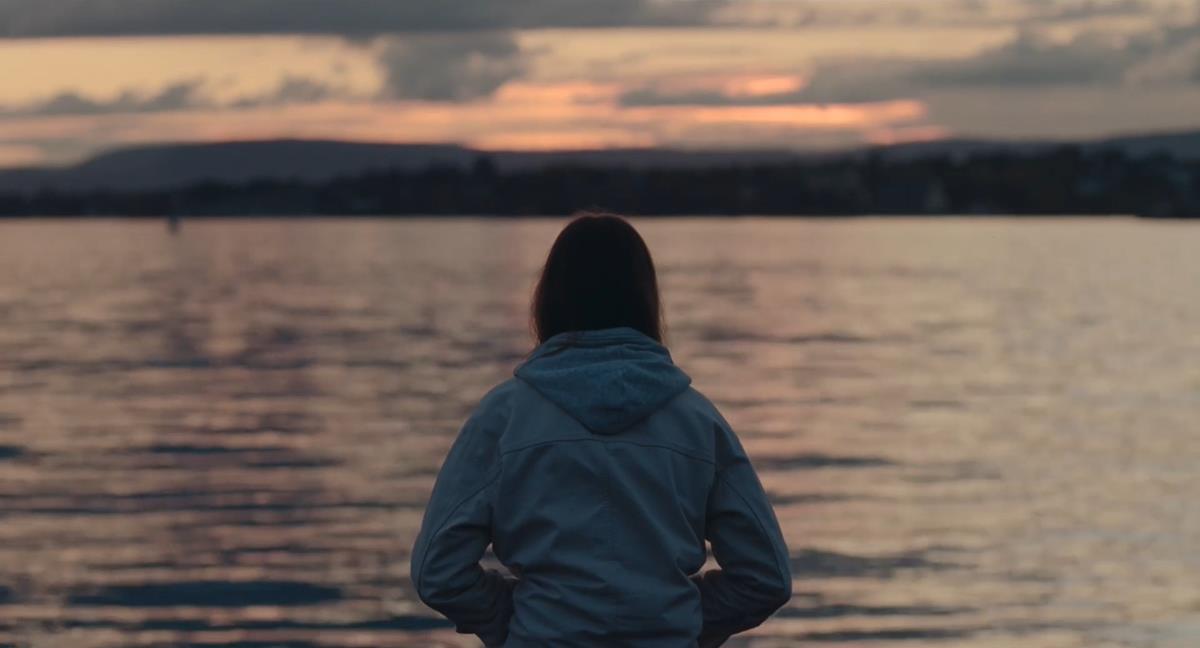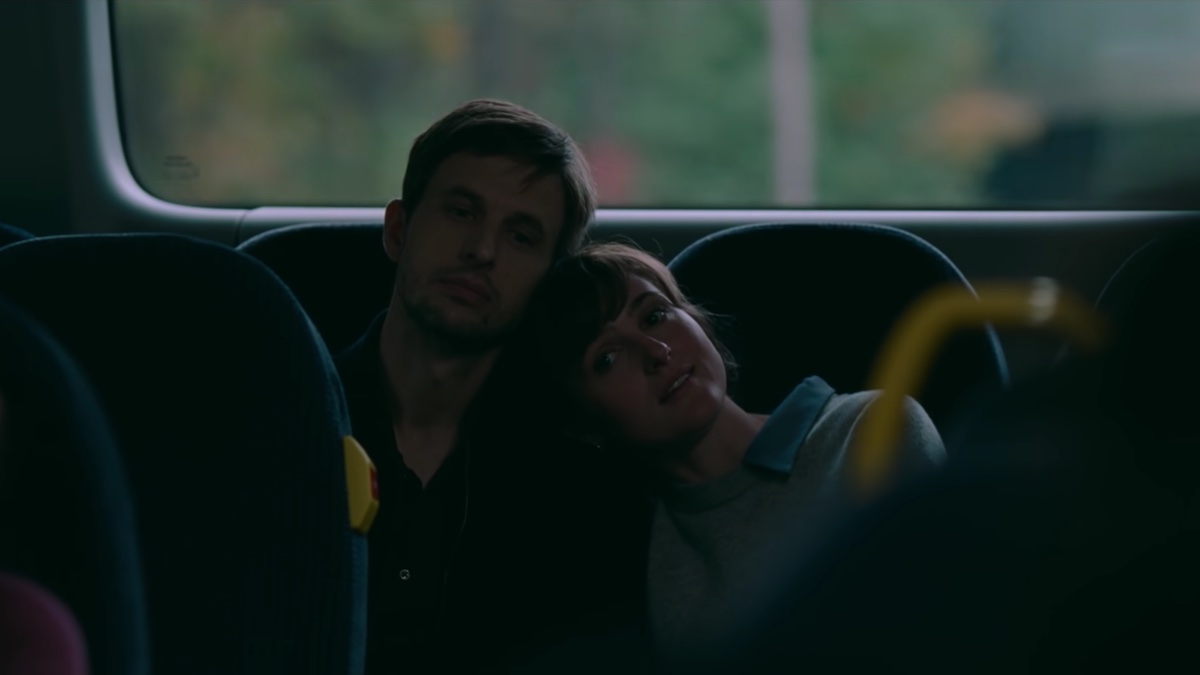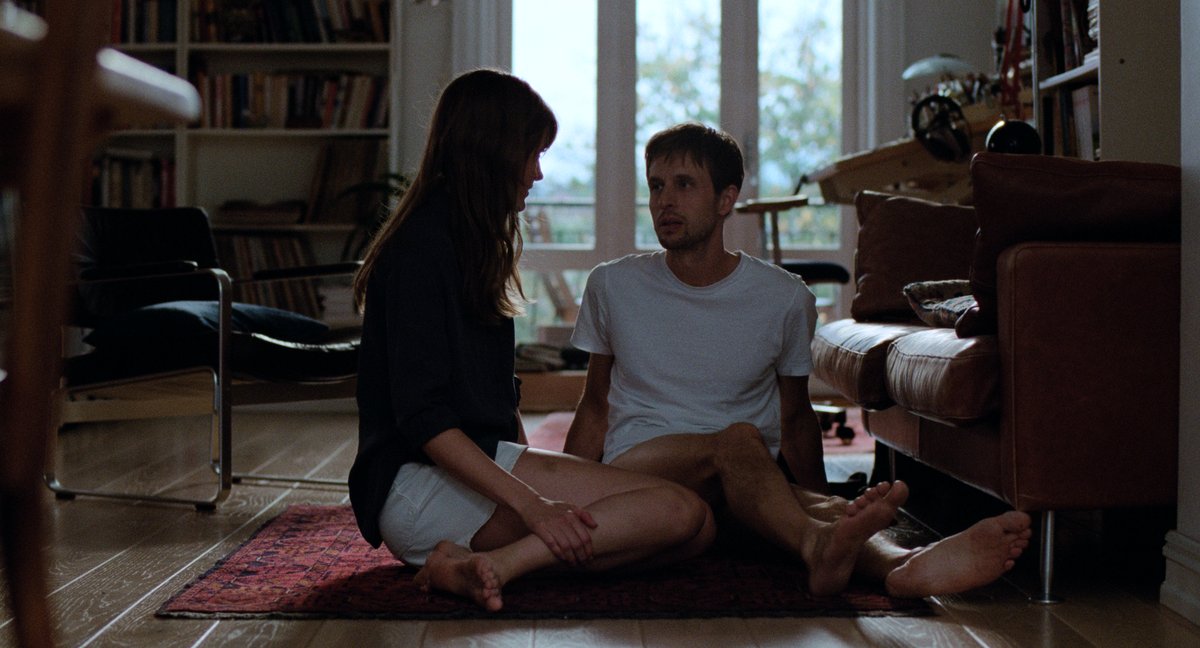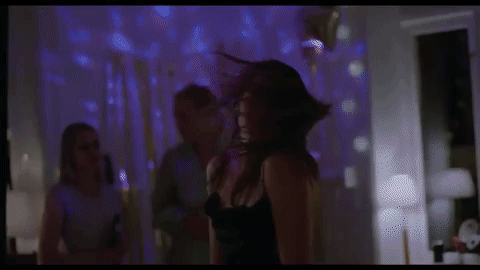
Who would have thought it would be Scandinavia once again looking to teach the world more about the human condition? Last year we had Denmark’s Another Round, scooping the Best International Feature Oscar and BAFTA awards, and advising us on how alcohol probably isn’t the best stimulant to base your decision-making on. A US version is in development starring Leonardo DiCaprio.
Now we have The Worst Person in the World from Norway. A film that Peter Bradshaw of The Guardian describes as “the kind of film we’ve all seen done so badly that it’s an unexpected treat to see it done well and to realize that its themes are very important.”
The film is nominated for an Academy Award twice over: once for Best Original Screenplay for writer Eskil Vogt and director Joachim Trier, and again for Best International Feature. If The Worst Person in the World wins the original screenplay Oscar, Trier is sure to credit the film’s star, Renate Reinsve, for whom he wrote the part of Julie.
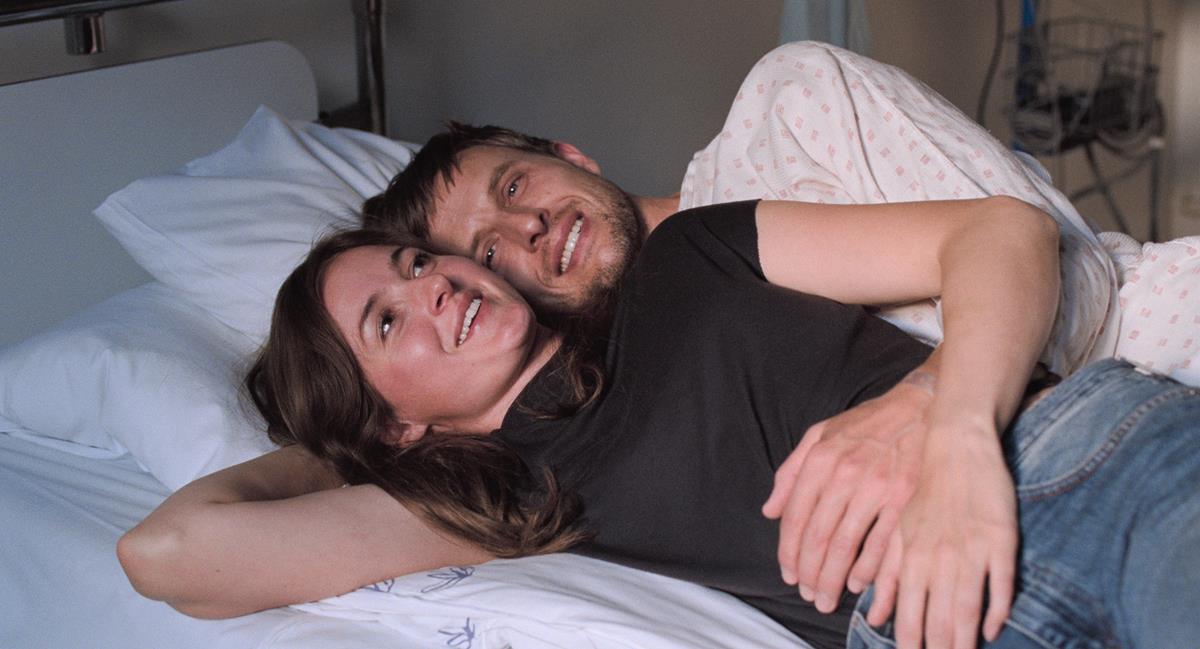
Bradshaw himself is also very enamored, writing, “Renate Reinsve is the actor who takes on this role and she takes off like a rocket, deserving star status to rival Lily James or Alicia Vikander for her tremendously mature, sensitive and sympathetic performance.” The Cannes jury agreed with him when they awarded Reinsve Best Actress for the role, marking the first time a Norwegian actress has won anything at the film festival.
READ MORE: The Worst Person in the World review – Nordic romcom is an instant classic (The Guardian)
In the movie, Julie is facing the difficult crossroads age of 30 and is bewildered by her indecision. Scott Roxoborough at The Hollywood Reporter describes her deadlock. “Julie is an almost-30 woman who still hasn’t figured out what she wants to do with her life. She studied medicine, then dropped it for photography. Now she works in a bookshop. Her love life is similarly ambivalent.”
Julie moves in with Aksel, a graphic artist who is ten years older than she is and looking to settle down. Julie is pretty sure she’s not ready and randomly meets cute and carefree barista Eivind, who gets her dreaming of another life.
If you think the plot harks back to a bygone era then you’d be right. Director Joachim Trier takes his inspiration from a golden age of romantic comedies, “The best of romantic comedies can teach us something about being human,” he philosophizes. “If you think about Philadelphia Story by George Cukor, Katherine Hepburn has to choose between two different lives through two different loves. Julie has to accept herself and to love herself and not feel so miserable.
Fred Topel at Deadline pushed the director on his love for Cukor, “The films George Cukor made, like The Philadelphia Story, were films not only about finding the right partner but existential films, films that dealt with important life choices,” Trier said. “The thing about it was to try to create something that had levity, and hopefully humor and at the same time had also some serious drama in it.”
READ MORE: ‘The Worst Person In The World’ Writer-Director Joachim Trier Hid Epic Themes in Rom-Com – Contenders L.A. (Deadline)
After a detour into English-language territory (2015’s Louder Than Bombs, starring Jesse Eisenberg, Gabriel Byrne and Isabelle Huppert) and genre cinema (the 2017 horror thriller Thelma), Trier is very much back in his wheelhouse with The Worst Person in the World. The film is lighter and more playful than his first two films — it has moments that feel like a Hollywood rom-com — but he still knows when to go dark.
Trier explained his dark side to Roxoborough: “Yes, we’ve been called an anti-romantic romantic comedy or a romantic comedy for people who hate romantic comedies. I happen to love some romantic comedies — not all of them — but the best films, for me, are the ones that force us to look at ourselves, existentially and emotionally and in terms of identity.
“We wanted to make a modern romantic comedy where it’s not about a woman finding a man in order to find purpose in her life, but to see how being with different people exposes her — to her anxiety, to her fear of commitment and to tease out all the comedy and chaos that comes out from that.”
Trier, who like the character Aksel (Anders Danielsen Lie), is in his forties, admits he’s a personal filmmaker, but also hopes that both he and Vogt are just good observers of people.
“Their goal was to be humanist and open in telling a story that decidedly isn’t theirs,” says Gregory Ellwood in the Los Angeles Times. “In their view, romantic comedies haven’t been taken seriously as the great existential film genre that it is. They wanted to play with genres and twist them. And, perhaps, that opened the door to explore their own experiences.”

“I know who this Julie is, I know who this Aksel is, I feel them in me. I feel them in people that I’ve been close to,” Trier says. “I think it’s that way for the actors too. That’s my job as a director. How can they reveal themselves in a part that I wrote, so that it feels like they are that character?”
READ MORE: Could be ‘The Worst Person in the World’ isn’t the movie you think it is (Los Angeles Times)
In a Q&A for The Hollywood Reporter, Reinsve tells Robert Koehler: “We did a lot of preparation before filming,” which included “discussions about life and love and philosophy and our own experiences, what Julie thought, the physical side of her character. Since we were exploring five years of Julie’s life, I had to be very specific about how she moved and felt from one moment to the next. I gained a new way of acting through this because Joachim asked me to let go and lose all control, which was very scary. He asked me to be very open to what happens between the characters, because the [movie’s] main dynamic is what happens between them.”
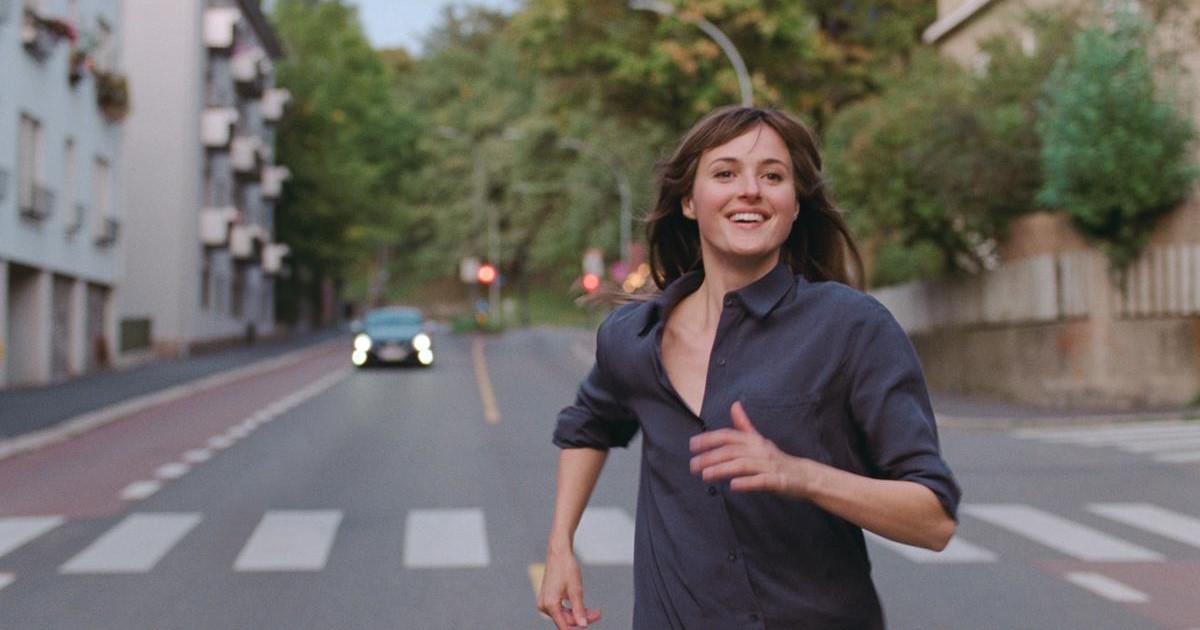
The actress adds, “the whole process was very collective, (since) everyone was so taken with the script and the multi-dimensional characters. We were all very passionate, and that’s because Joachim is a very good leader and a really good filmmaker. He makes his whole team very ambitious but also calm and safe.”
READ MORE: “The Rhythm, Pacing and Mood of the Film Should Mirror the Characters”: ‘THR Presents’ Q&A With ‘The Worst Person in the World’ Director Joachim Trier and Star Renate Reinsve (The Hollywood Reporter)
In the Film At Lincoln Center podcast, NYFF director of programming Dennis Lim is joined by Joachim Trier, Renate Reinsve, and Anders Danielsen Lie to discuss their latest film, The Worst Person in the World, a Main Slate selection of the 59th New York Film Festival:
“This film is a character piece about Julie; I did not want to make a general statement about what it means to be a woman today, that would be impossible,” Trier tells Variety’s Elsa Keslassy. “The fact of her being a woman eventually comes in to play by itself, through trying to portray truthful situations with humor and satire, and different things that I have experienced, seen or imagined. I don’t have so much control when I write, my co-writer Eskil Vogt and I try to find interesting ideas and we try to explore them truthfully. The great thing about art is that it doesn’t have to be an analysis or sociological study: We can try to tell something honest about one person, and out of that, there may be something bigger to think about.
“Some of the questions we are asking in the film are existential and I guess could apply to all people,” the director adds. “This film deals with how relationships mirror our existential expectations of life. In our culture, we are brought up to expect love to be the place where we fulfill ourselves, and the same with careers.”
READ MORE: ‘Worst Person in The World’ Director Joachim Trier: ‘I Didn’t Want to Make a General Statement About What It Means to Be a Woman Today’ (Variety)
Trier tells Andrew Bundy of The Playlist that Reinsve contributed quite a lot to her character’s development. “We [Trier and Vogt] showed her an early draft and she provided feedback,” he explains. “It’s a delicate thing to talk about these days. We’re having very valuable conversations that we must have about ideas of gender and representation in art. I have to say that I’ve written men and women before — old and young people who are quite different from me — but I believe as an artist that’s my duty: to try to be truthful and, from myself, try and find a way to understand someone that is not myself, which is the character. The dialog you have between actors and collaborators, that’s the place where we explore something together and question things. It’s not like I’m sitting on a high horse pretending to know the answer. I wanted to tell this story. I always feel that I am all of the characters, and I am none of the characters. It was fun because I loved Julie as a character. She means a lot to me.”
READ MORE: Joachim Trier Talks The Inspiration For ‘The Worst Person In The World,’ His Love Of Graphic Novels & More [Interview] (The Playlist)
Variety’s Ben Croll observes that a chapter structure allowed Trier and Vogt to take bigger swings between humor and pathos, covering years on end with one segment and spending the subsequent one over the course of a single, meaningful night.

“I like the idea that one life consists of many short stories,” says Trier. “The literary form made it possible to have all these moments and fragments from a longer period. Julie is somehow awaiting her great destiny, waiting for fate to intervene; so putting that into a novelistic scale would mirror that sense of anticipation — and disappointment too.”
READ MORE: Joachim Trier On Rounding Out His Oslo Trilogy With ‘The Worst Person in the World’ (Variety)
The Atlantic’s David Sims asks: “Could this intriguing young woman really be the worst person in the world?

“Of course not,” he says, “but Trier quickly lays out why the audience might roll their eyes at Julie’s aimlessness, showing how her initial plans to become a doctor morphed into studying psychology, a career prospect she then abandoned to pursue professional photography after scrolling through her iPhone camera roll.
“So perhaps Julie is something of a flibbertigibbet,” Sims adds. “She’s also self-possessed, intelligent, and wryly insightful, all conveyed through Reinsve’s sparkling performance.”
READ MORE: The Worst Person in the World Is Devastatingly Relatable (The Atlantic)

Trier also wanted The Worst Person in the World to be visually epic.
He shot on 35mm film to capture it. “I think when people say that closeups belong on television, I disagree,” Trier said. “I think to be intimate, close to characters on a big screen is a unique experience. To have the right skin tones and the right colors, I shoot on 35.
“We always wanted to make a warm film shot in 35mm with more color, with scenes that almost feel like a musical without actually being in a musical, you know what I mean? That’s how we approached it.”
READ MORE: ‘The Worst Person in the World’ Director Joachim Trier Calls His Film “A Modern Take on Classic Rom-Com” (The Hollywood Reporter)
Trier had in fact asked his cinematographer, Kasper Tuxen, to make “a visual feast” of the film’s look. The director wanted to welcome people back to watching films in a theater, and the look was a kind of reward. “He is Danish; he’s worked with several great directors like Mike Mills and Gus Van Sant,” he said of Tuxen’s work. “We are from the same generation and have admired each other’s work for years but it’s the first time I’m working with him. When he came to Norway, he shot photos every half hour to study the Norwegian light that he loves.”
The Worst Person in the World is made with Trier’s characteristic freewheeling style, full of voiceovers, digressions, gags, and unexpected swerves. Oslo becomes the back drop. “It’s a film about time, ultimately. It also hopefully leaves space for an audience to engage it. I wanted to make a warm embrace of a film, and I want there to be hope in it even though it’s quite sad at times,” he told Mark Asch at Film Comment.
“An important guide was Virginia Woolf’s A Room of One’s Own. Julie needs to find a space of her own, where she can tolerate herself and not escape through the contact of others.”
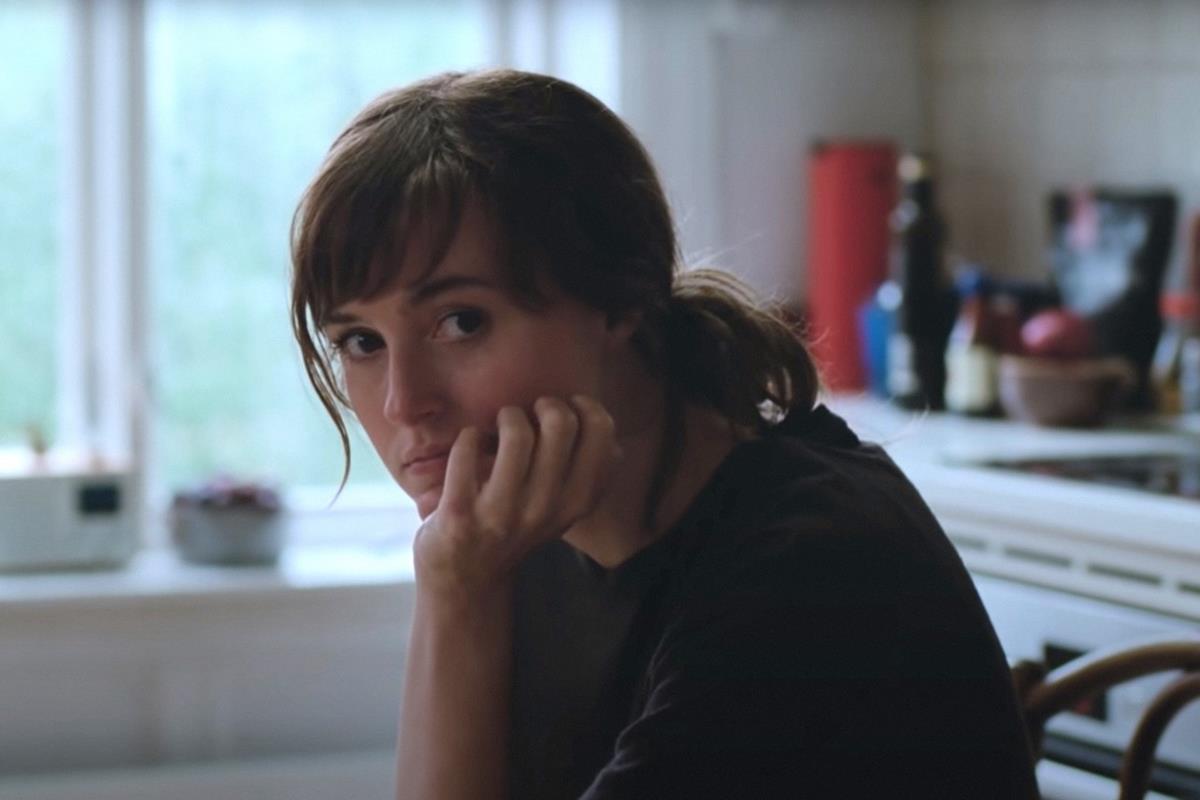
READ MORE: Interview: Joachim Trier (Film Comment)
Scandinavia and its filmmaking heritage was very much in evidence during a “free talk” at the New York Film Festival, where director Mia Hansen-Løve (Bergman Island) discussed a shared love of Ingmar Bergman with Trier.
Trier first encountered the iconic director in his mid-twenties, reports The Playlist’s Isaac Feldberg, and was most struck by the “ruthless proximity” of his fascination with human relationships. “The art of Bergman is the art of the closeup,” explained Trier, “of pushing the camera up against the human being and understanding that you can observe a person as intimately as possible with a camera and you’ll never penetrate, quite, what that character is.”
READ MORE: Mia Hansen-Løve & Joachim Trier Talk Ingmar Bergman, Growing As A Filmmaker & More [NYFF] (The Playlist)
Watch the NYFF talk with Joachim Trier, Renate Reinsve, and Anders Danielsen Lie on The Worst Person in the World:
The core of the film is according to Brianna Zigler in Paste, the idea that in life, figuring things out is integral to being, not becoming. “To constantly change and evolve is to be alive. We are meant to be as malleable in spirit as we are in flesh, but to stay in one place or free oneself from the other is not indicative of a life less lived either way,” says Zigler. “Thus the title of the film is a cheeky one, a phrase with which Eivind (Herbert Nordrum), not Julie, refers to himself at one point in the film, when the perspective crosses over very briefly to his (and which reminded me of the similarly fleeting, funny perspective shift in Janicza Bravo’s Zola). Eivind felt like the world’s worst person when he began to drift from his girlfriend, Sunniva (Maria Grazia Di Meo), whose noble, newfound environmentally conscious pursuits in sustainability created too much of a fissure in the lives they each wanted to lead.
“It’s true that such a thing can make you feel like the worst person in the world — too selfish, too unstable, not generous or understanding enough,” Zigler continues. “A little too fickle and imperfect, just like this film.”
READ MORE: The Worst Person in the World Writes an Invigorating, Imperfect Ode to Becoming a Person (Paste Magazine)
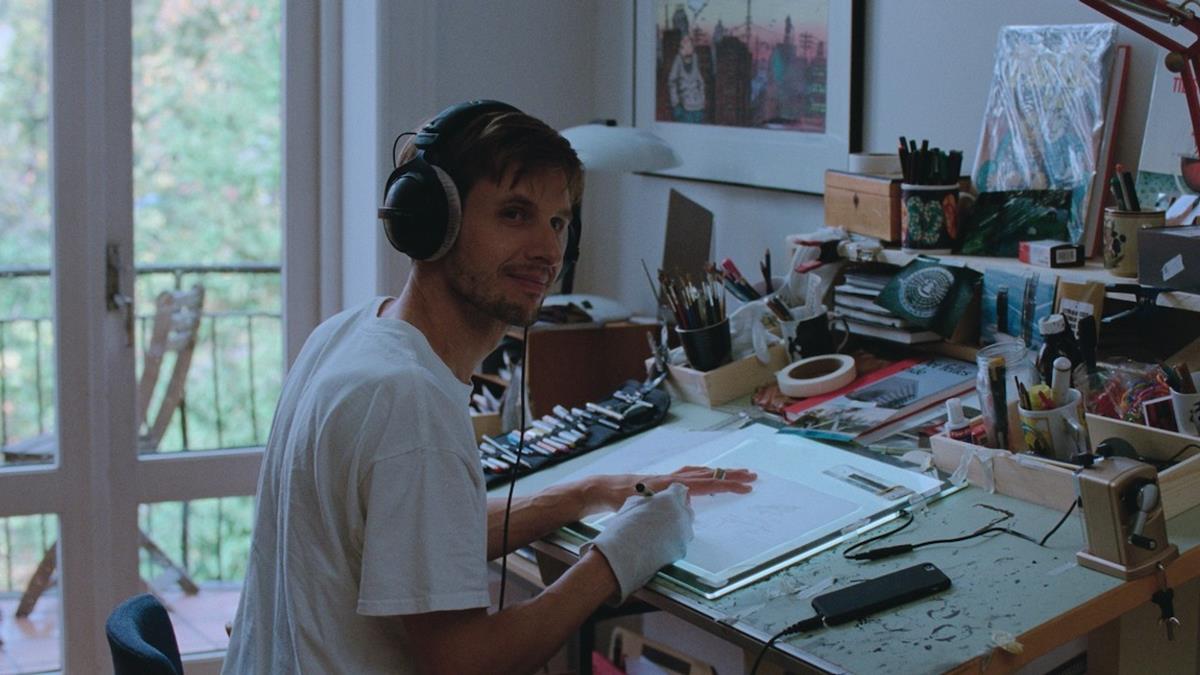
“At the end of the day, all three of [the main characters] feel like the worst person in the world,” Trier reveals to Cineuropa’s Jan Lumholdt.
“Aksel was easy to write for me and for Eskil Vogt,” the director explains. “Through him, we could self-deprecatingly foul our own nests a little, but also address more serious issues like the loss of time and identity. We then gradually found that Julie was the biggie. Her experiences and emotions brought many problems that we could identify with: kids or no kids, feeling adult or not, existential stuff that became the central theme. Then Eivind turns up and messes things up.”
READ MORE: Joachim Trier • Director of The Worst Person in the World (Cineuropa)
Want more? Watch director Joachim Trier on The New York Times’ “Anatomy of a Scene, where he discusses that incredible scene where time stands still, and how the production had passersby join in toward the end, creating a humanistic rather than supernatural feel:
You can also watch Joachim Trier, Renate Reinsve and Anders Danielsen Lie discuss the making of The Worst Person in the World in a Q&A accompanying a special sneak preview of the film at Film at Lincoln Center:
Or check out Joachim Trier and Renate Reinsve in this Q&A for the Nordic & Baltic Oscar Contenders series at Scandinavia House:
You can also watch “A Beginner’s Guide to Joachim Trier,” from Little White Lies, a video essay that looks back at Trier’s early career:






